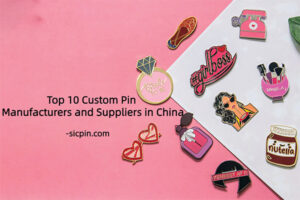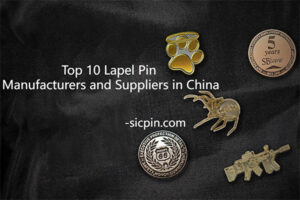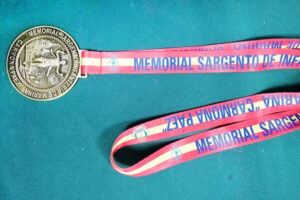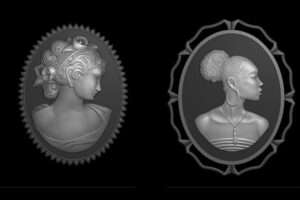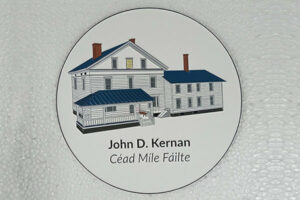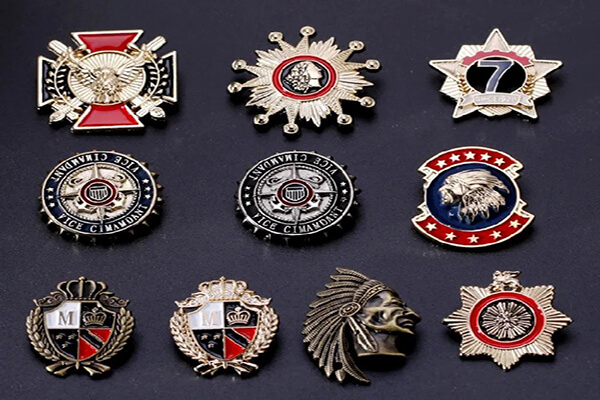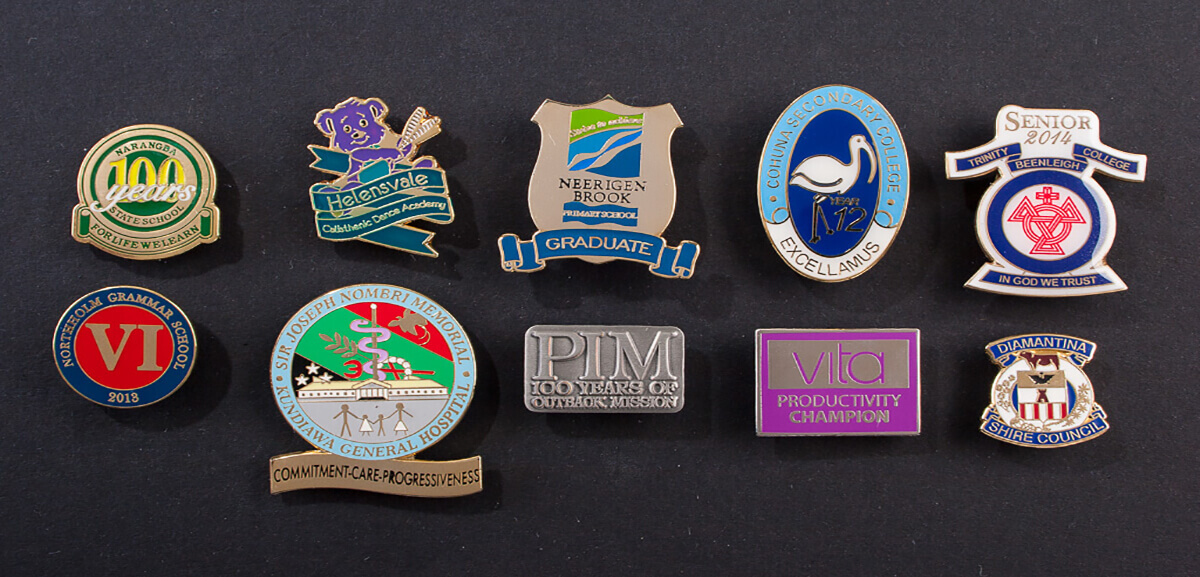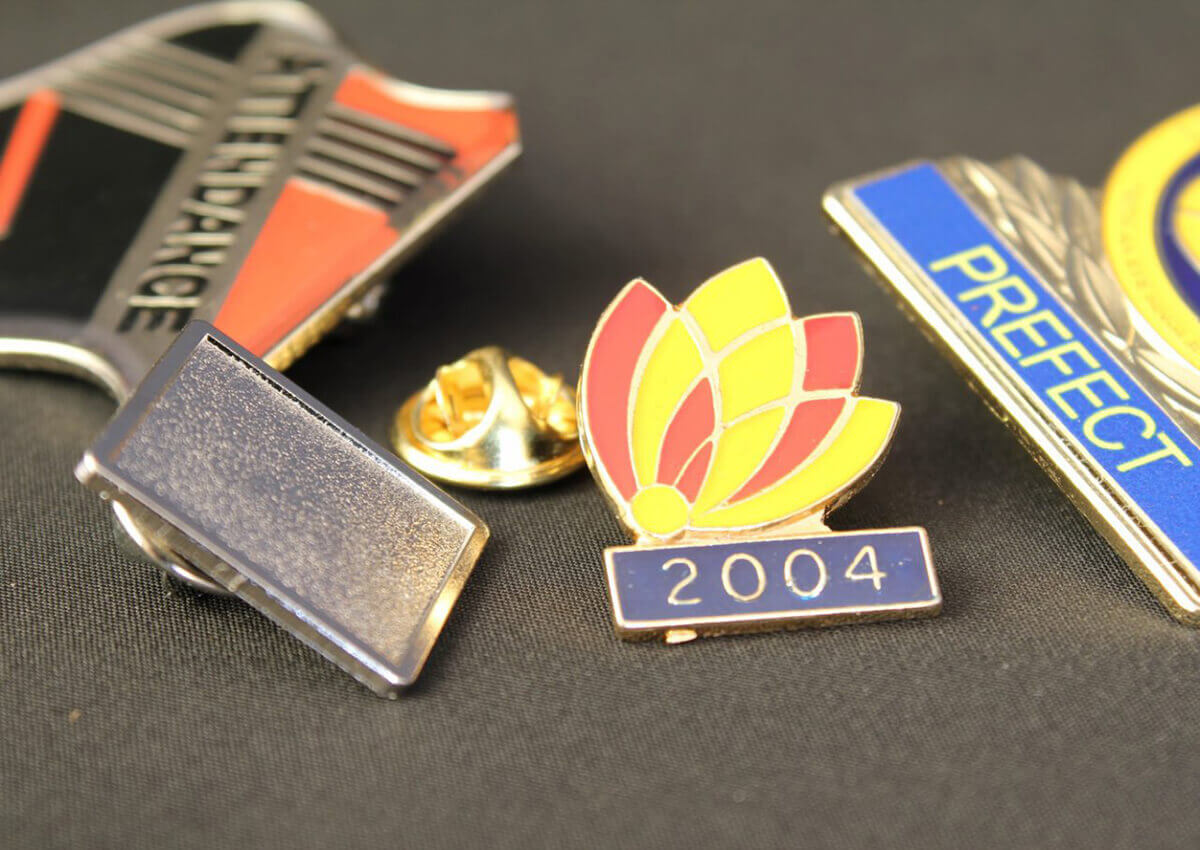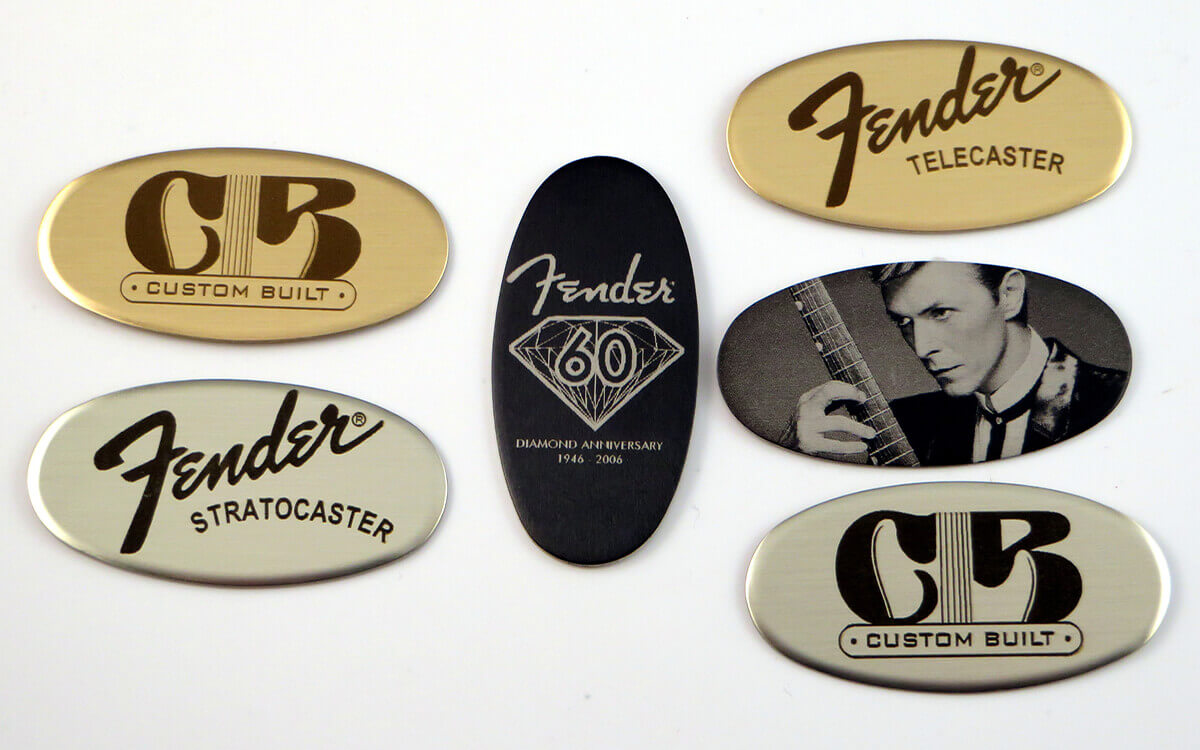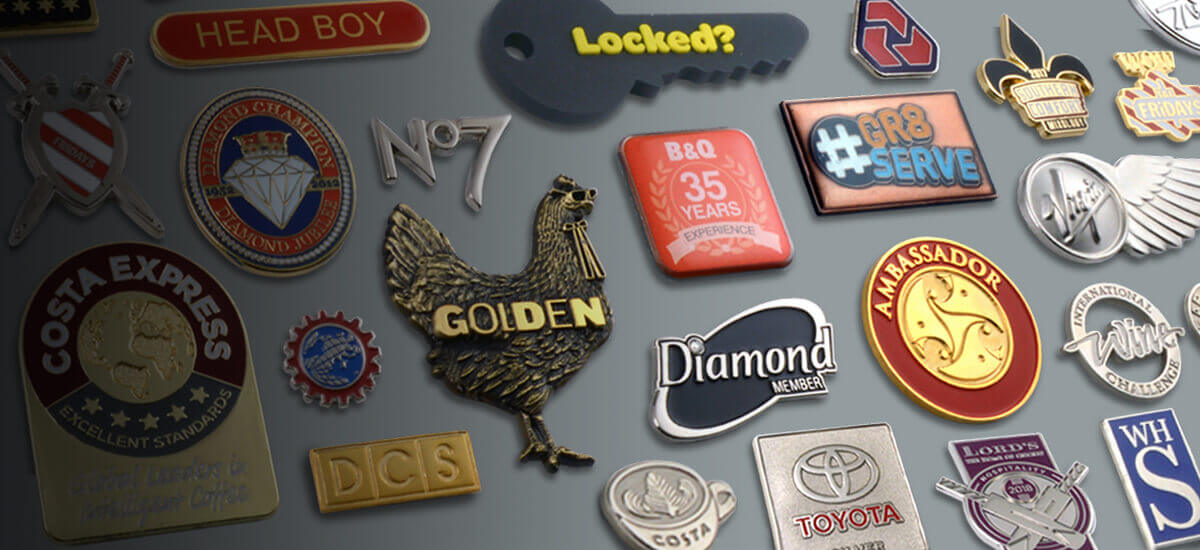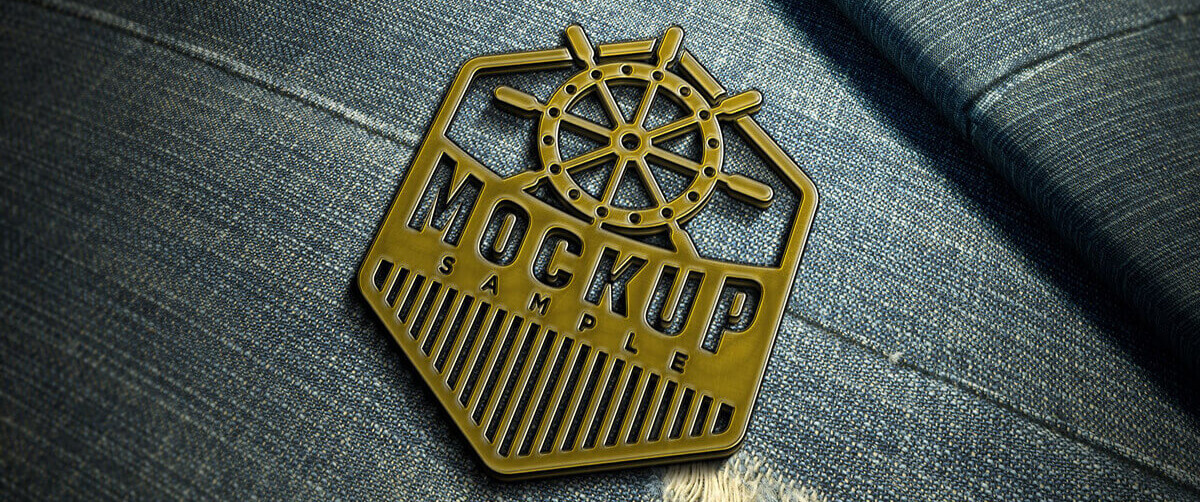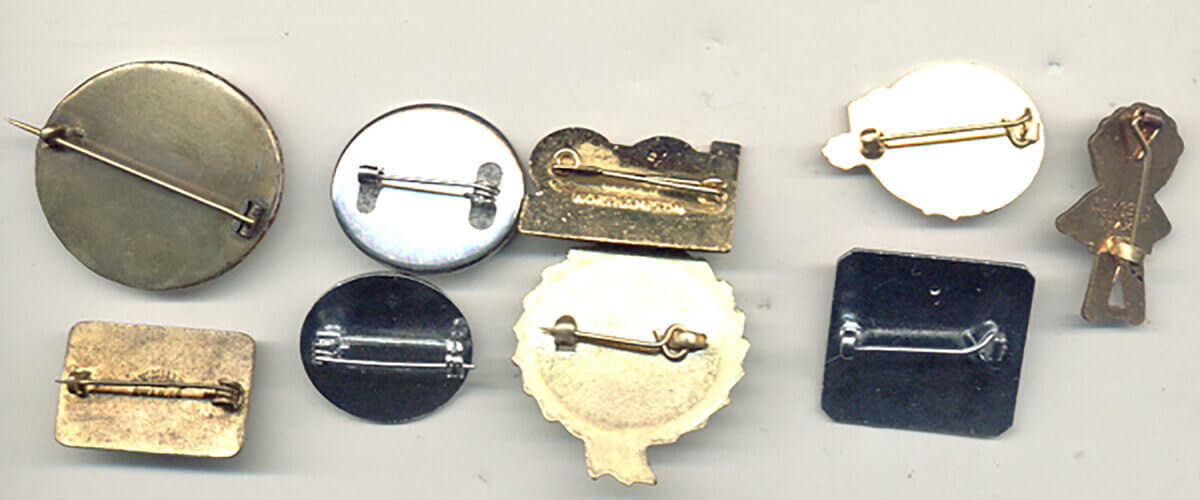Currently, the most common badges on the market are metal badges. So, do you know what a metal badge is? What materials are different metal badges made of? What are the benefits of using metal badges? Don’t worry, in today’s guide, we’re going to talk about metal badges. Read on to learn more.
1. What is a metal badge?
A metal badge is a badge made of metal. Badges, mostly made of metal or cloth, are “symbols worn on the body to express status and occupation.” They can be traced back to the totem symbols of clans and tribes in primitive societies. With the continuous development of popular culture, badges have gradually become a trend and entered the public eye. Although badges are exquisite and small, they can cover everything and even represent an era or a trend.
There are almost no two identical badges in this world, so each badge collection is unique, which is one of the reasons why badges are so fascinating! In life, the most common ones we see are commemorative badges and cloth patch badges. Cloth patch badges are often used on clothing, shoes, and bags. In addition to being interesting and fun, they also add beautiful scenery to the street!
Commemorative badges account for almost half of the badge industry. Most of them are to commemorate certain events, activities, sports games, etc., and of course, there are commemorative badges for tourist attractions. This kind of badge is like a photo, recording the beautiful scenery at that time and savoring it after you go back!
(Another related post: Top 8 Sites To Buy Lapel Pins in 2023)
2. What are the differences between metal badges made of different materials?
Material options for customized badges generally include metal and non-metal. There are a number of metal materials available, such as iron, copper, stainless steel, zinc alloy, gold, and silver. Non-metallic materials include plastic, acrylic, plexiglass, PVC soft rubber, etc.
1) Iron
Iron is one of our most common materials. One of its characteristics is that it has good hardness and is relatively cheap. Therefore, metal badges made of iron are much cheaper. Moreover, the effect of electroplating or baking paint on the surface of iron badges is similar to that of metal badges. There is a difference between the copper badge and the copper badge in terms of texture. However, one disadvantage of iron metal badges is that they are easy to rust if transported by sea for a long time, so we do not recommend that foreign customers choose iron badges.
2) Copper
Copper (including brass, red copper, and red copper) is the metal of choice for high-end badge customization materials. Among them, copper is used for the production of enamel badges, while brass and bronze are mainly used for the production of metal badges such as imitation enamel badges and painted badges.
Copper is a relatively soft metal material. It is the most commonly used material for making metal badges. It is important to note that the metal badges produced are of high quality and have a beautiful appearance. The general thickness is 1.2 mm, 1.5 mm or 1.8 mm. The thickness of commemorative medals is generally 3 mm.
(Another related post: How to Choose the Right Lapel Pin for Your Style)
3) Stainless steel badge customization
Stainless steel, also known as stainless iron, is mainly used to make printed badges, also called glue badges. Its thickness is generally 0.5mm and 0.8mm. The main features of stainless steel badges are strong corrosion resistance, metal durability, and cost-effectiveness, and its surface is printed in rich colors and has outstanding decorative effects. It is a good choice for making badges.
4) Aluminum alloy
Aluminum alloy is the best material for die-cast metal badge customization. Aluminum alloy has several characteristics that are very suitable for making metal badges, three-dimensional badges, and double-sided commemorative coins.
It has the following advantages:
- It has good casting performance and can die-cast dense parts with complex shapes and thin walls, and the surface of the castings is smooth;
- The surface can be electroplated, painted, sprayed, and other processes;
- Badge customization does not attract iron or stick to the mold during die-casting;
- It has good normal-temperature mechanical properties and wear resistance;
- It has a low melting point and melts at 385 degrees, making it easy to die-cast and form.
5) Gold and silver
It is also common for silver materials to be used to make badges. They are generally used to customize higher-end badges. Mirror gold and silver materials are more expensive, and pure gold and pure silver are not commonly used. It is also very difficult to plate gold or silver on the surface after using other materials. common.
6) Non-metallic materials
Badges can be made from non-metallic materials such as plastic, acrylic, plexiglass, soft PVC glue, and more. Despite the fact that they are not afraid of water, their texture is worse than that of metal.
(Another related post: 10 Creative Ways to Wear Lapel Pins)
3. Coloring process of metal badge production
When making metal badges, the coloring process is a crucial step, which can give the badge a unique texture and color.
Different coloring processes will produce different effects and prices will vary. Therefore, before customizing a badge, you must understand the differences between each process in order to create your ideal customized badge. Let’s take a brief look at several common badge coloring techniques.
1) Paint badge
Baking paint badges are a coloring process that fills the grooves of the metal base with pre-mixed paint and then solidifies the paint through high-temperature baking. The paint badges have the following characteristics:
- The pattern has obvious concavity and convexity, bright colors, clear lines, and rich metallic luster, and the metal material has a strong texture;
- Materials are usually copper, zinc alloy, iron, etc. Among them, zinc alloy and iron are cheaper and the finished product has good quality, so they have become the choice for more badge customization;
- The surface can be coated with protective resin, which not only protects but also increases the gloss of the badge, but the badge will lose its concave and convex texture and may turn yellow after a long time.
Paint badges are economical, affordable, and good-looking. They are generally used for daily decoration badges, unit or group activity badges, etc.
2) Enamel badge
Also known as cloisonné badges, enamel powder is applied to red copper. It is the highest quality coloring process among badges. It has strict requirements on materials and technology. The characteristics of enamel badges include:
- The production method is to paint first and then polish, it so the surface is smooth and flat. Unlike the paint badge, there is no obvious concave and convex feeling;
- The color is stable and will not fade, making it very suitable for long-term storage. However, the color tone is relatively single and the hair color is dull;
- The material is hard and will not leave traces when scratched by sharp objects, but it is not resistant to knocking and decay.
Because the paint surface of enamel badges is delicate and stable, the surface is smooth, and it gives a very high-end effect. It is often used to make commemorative badges that need to be preserved for a long time, such as honorary medals and medals of state agencies, the military, public institutions, etc.
(Another related post: A Wearing Guide to A Collar Pin on A Suit)
3) Imitation enamel badge
The production process is roughly similar to that of enamel badges, but the coloring material is different and resin paint with a brighter color is used. In terms of materials, copper, iron, zinc alloy, etc. are generally used, and their characteristics are as follows:
- The color contrast enamel badge is brighter and can be customized with different tones;
- The paint surface is not resistant to high temperatures and ultraviolet radiation, and the color will become unstable and turn yellow over time;
- The material is soft and can easily be penetrated by sharp objects, but it is resistant to falling.
The imitation enamel material is bright and the color is beautiful. It is suitable for making high-end hobby collection badges, commemorative collection badges for enterprises and societies, etc.
4) Printing badges
It is also called a dropper badge because the final process of making the badge is to drop a layer of protective resin on the surface of the badge. Printing methods include screen printing and flat printing. The materials are generally stainless steel and bronze. The characteristics are as follows:
- It can realize complex badge pattern printing, such as gradients and physical photos, which can be perfectly realized;
- The surface is smooth with no unevenness.
Printed badges are suitable for complex patterns, original picture effects, or badges that do not require metallic color. It is more commonly used in occasions such as advertising, publicity, or events.
Each process has its own unique characteristics and advantages, and when choosing a coloring process, you need to make a decision based on your ideal results and budget. Of course, in addition to the above effects, badges can also be customized with multi-color electroplating, fluorescent colors, transparent colors, and other effects according to personal needs.
(Another related post: Lapel Pin 101: Everything You Need to Know)
4. Benefits of using metal badges
What is the significance of metal badge making is an interesting topic. The significance of metal badge production can be viewed from the following aspects:
For enterprises: Promote corporate brand culture. Enterprises can customize their own badges as a symbol of corporate image to demonstrate the company’s philosophy, spirit, and culture to customers or partners. Metal badges are high-end, exquisite, unique, rare, and artistic gifts that can increase customers’ goodwill and trust, and can also increase the company’s visibility and influence.
Metal badges are the best gifts to motivate your employees. Give employees a badge on their birthday to make them feel at home. When employees make outstanding contributions to the company, a medal is given to them to give them a sense of accomplishment.
For example, I have a client. He’s a bathroom mirror manufacturer. He orders a bunch of metal badges from me every year. These are not only customized for the birthday employee but also customized to motivate good employees. He says it helps employees feel at home.
For individuals: Express personal feelings and preferences. Individuals can customize their own badges as a personalized expression to show their interests, hobbies, beliefs or emotions. Metal badges are creative and meaningful items that can meet personal aesthetic and emotional needs, and can also increase personal charm and temperament.
For society: To commemorate special events or people. Metal badges can be used to commemorate some important or meaningful events or figures, such as historical events, social activities, sports events, celebrities, etc. Metal badges are items with collection value and commemorative significance. They can preserve historical memories, inherit cultural spirit, and inspire future generations to learn and progress.
To sum up, the significance of metal badge production is multi-faceted. It is not only a metal craft, but also a cultural carrier that can convey information, express emotions, and commemorate history.
(Another related post: Top 14 Most Valuable Challenge Coins)
5. Cost of custom metal badges
Metal badges are a classic and exquisite customized product that is widely used in enterprises, organizations, schools, teams, and other occasions to display identity, highlight honors, and enhance the image. However, many people have a limited understanding of the customization price of metal badges. The following is a detailed introduction to the price factors of metal badge customization. Below we will introduce these main factors one by one.
- Size: Badge size is an important factor in custom pricing. Usually, the larger the size of the badge, the higher the material and process costs required in the production process, and the price will increase accordingly.
- Material: Metal badges can be customized using a variety of materials, such as brass, zinc alloy, iron, stainless steel, etc. Different materials have different costs and characteristics, which will affect the customization price. Generally speaking, brass and zinc alloys are common choices. They have both good texture and luster and high durability.
- Design complexity: The complexity of badge design is one of the factors that determine the customization price. If the design requires complex patterns, details, or special pattern technology, the production process may require more time and production technology, thus increasing the production cost. Therefore, the design of Simple and straightforward badges generally has a lower price, while complex designs tend to drive the price up.
- Customized quantity will also have an impact on the price. Generally speaking, the greater the number of customizations, the total cost of production can be spread over more products, thus reducing the production cost of a single badge. Therefore, the price of mass customization of badges is generally more advantageous than that of individual customization.
In addition to the above factors, some other costs will be included in the customization price of metal badges, such as design fees, mold fees, transportation fees, etc. These fees vary slightly due to different customization requirements and need to be negotiated during the actual customization process.
(Another related post: Top 10 Medal Manufacturers to Custom Medals)
6. Factors to consider when choosing a metal badge manufacturer
There are many metal badge manufacturers. The products made by a good manufacturer not only have guaranteed quality, and exquisite workmanship but also superb technology. So, what are the criteria for choosing a metal badge manufacturer? Let’s find out together:
1) Design
The design of metal badge manufacturers needs to be mastered at an early stage. With a design team, the design must be as refined as possible to ensure that the process of making badges based on the design drawings is more accurate.
2) style
Style is an important part of badge-making. There are many models and methods. There are also many styles on the market. Customers need to meet innovative and creative design requirements when making badges.
3) Materials
Nowadays, users have higher and higher requirements for the raw materials of metal badge manufacturers. They not only require the use of stainless steel materials but also require the addition of many raw materials to the badges, such as brass badges, silver, acrylic, plastic, plexiglass, etc.
4) Process technology
The process determines the product quality of metal badge manufacturers, and the effects of different processes are also different, so the process can be selected based on the actual situation.
5) Price
The price of each metal badge-making market is different, but we know that if we choose different prices, the quality of the badge-making is incomparable.
Through the above 5 points, you can choose a suitable metal badge manufacturer to customize your product.
(Another related post: An Ultimate Guide for Watch Accessories)
7. Conclusion
That’s all you need to know about metal badges in this guide, including definitions, benefits, cost factors, and how to choose the right metal badge manufacturer. If you would like to know more about the production of metal badges, please contact SICpin.
How useful was this post?
Click on a star to rate it!
Average rating 5 / 5. Vote count: 1
No votes so far! Be the first to rate this post.

